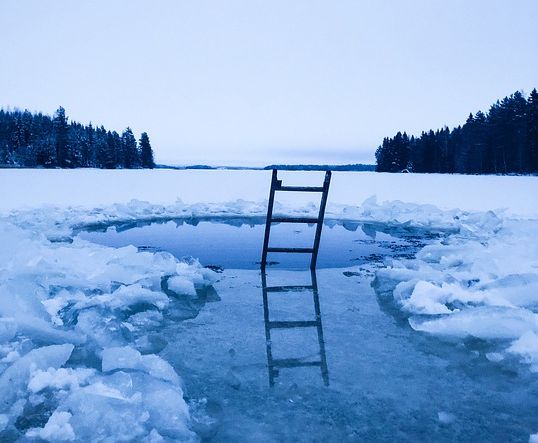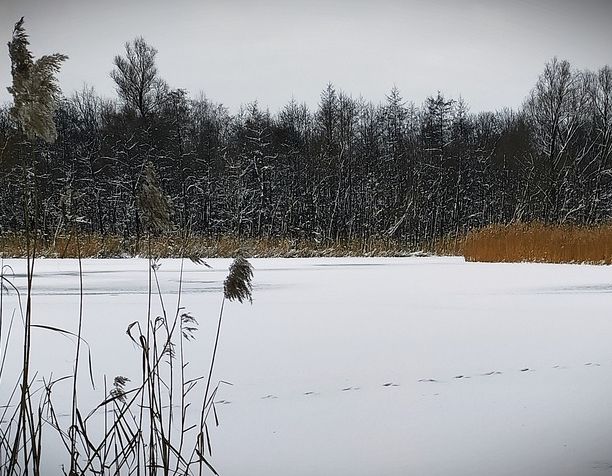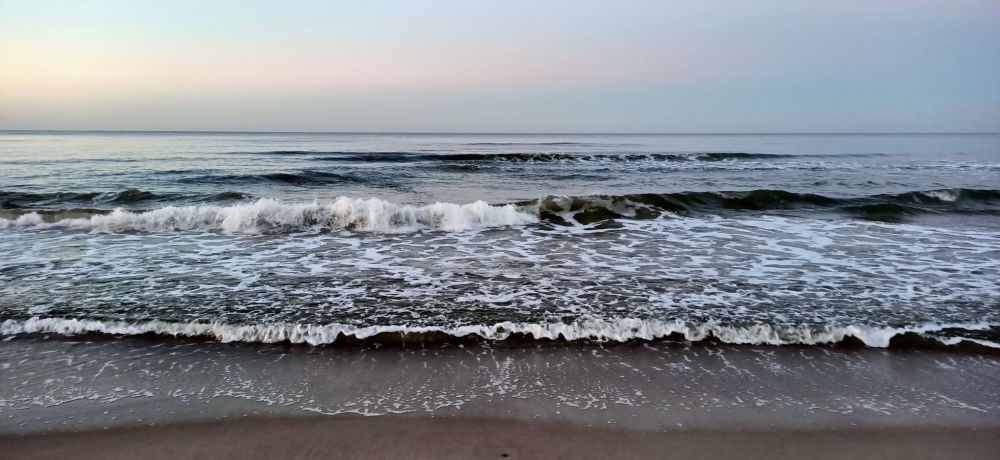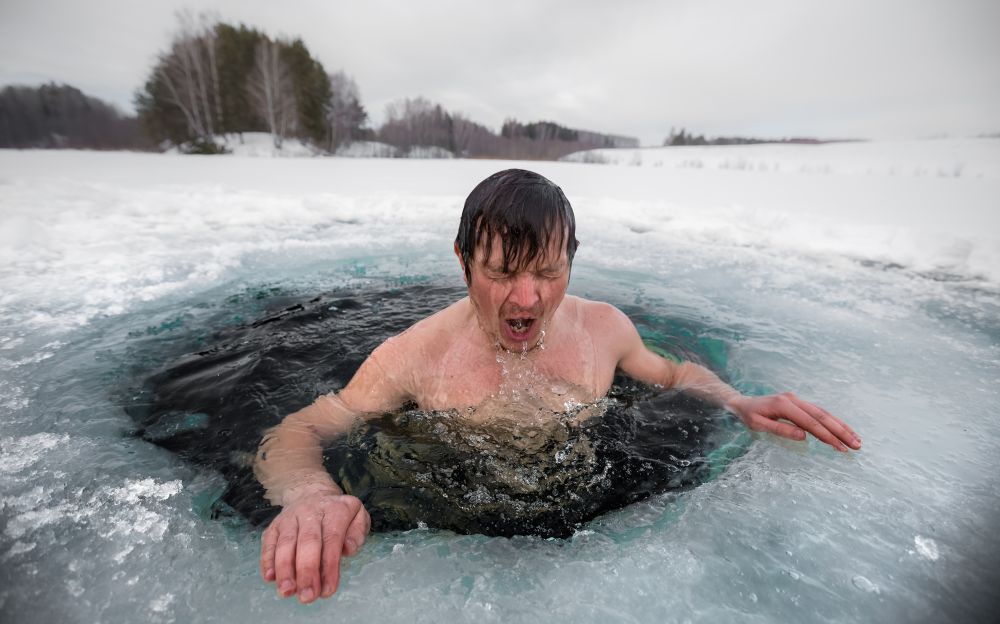YOUR BROWSER IS OUT-OF-DATE.
We have detected that you are using an outdated browser. Our service may not work properly for you. We recommend upgrading or switching to another browser.
Date: 24.02.2021 Category: science/research/innovation
The media are full of pictures of "walruses", which in Poland is a word for people keen on bathing in cold water, rolling around in the snow in swimming costumes, or climbing mountain peaks in winter, wearing just shorts. The fashion is spreading more and more widely. And what does science has to say about this?
 – First of all, it would be necessary to agree on what "cold water" means because this term is a matter of convention, one connected with the physiological response of the organism to cold – believes Prof. Piotr Dobryszycki* from the Department of Biochemistry, Molecular Biology, and Biotechnology of WUST’s Faculty of Chemistry, whom we asked to look at the phenomenon of cold bathers from the scientific angle.
– First of all, it would be necessary to agree on what "cold water" means because this term is a matter of convention, one connected with the physiological response of the organism to cold – believes Prof. Piotr Dobryszycki* from the Department of Biochemistry, Molecular Biology, and Biotechnology of WUST’s Faculty of Chemistry, whom we asked to look at the phenomenon of cold bathers from the scientific angle.
– Water with a temperature of less than 15°C is considered cold. For cold bathing, water has to have a temperature in the range of 8-12°C, while the temperature of icy water is below 4°C – clarifies the research worker. Generally, Cold bathing is practised as a group activity from autumn to spring.
Bathing in cold water is a very stressful physiological condition. People who regularly do it are capable of achieving varying degrees of adaptation to the cold. However, the question arises as to whether this type of activity has health benefits. Or is it the other way round?
Contemporary human beings protect themselves against the cold using all possible means – we wear warm clothes and avoid cold places. Our natural mechanism of thermoregulation has therefore become impaired.
– We very often stay in overheated houses and set the temperature in our cars too high; one of the cardinal sins is sleeping in overheated rooms. Bathing in cold water allows these processes to be reactivated and normalised. Immersion in icy water leads to a strong constriction of the capillaries and peripheral blood vessels. Cold bathing is therefore one way of regulating body temperature and strengthening our immune system – says Prof. Dobryszycki.
 It’s worth noting that a cold bather spends only a few minutes immersed in cold water, hence the difficulty in measuring the physiological response.
It’s worth noting that a cold bather spends only a few minutes immersed in cold water, hence the difficulty in measuring the physiological response.
– Preliminary blood tests performed immediately before and after a short bath at 6°C showed that leukocyte levels were significantly raised in the blood. Perhaps it’s through this that results in the protection against inflammation and respiratory infections. However, the clinical relevance of these findings is still uncertain – believes the professor.
Various studies developed by specialists in various fields indicate several benefits resulting from regular cold bathing. The main advantage is the toughening of the organism and better resistance to cold by, among other things, increasing basic metabolism. According to the scientist, swimming in a pool (around 20 °C) can also produce similar effects.
Sudden temperature changes increase the efficiency of the cardiovascular system, as well as improving blood parameters and blood supply to the skin, which in turn contribute to good physical shape and appearance. Also, cold triggers an increase in levels of certain hormones (e.g. catecholamines), neurotransmitters (dopamine), and immune system compounds (cytokines), which generally have a good effect on our health.
Contact with cold accelerates the recovery of the body after intense physical or mental exertion (it reduces stress levels) and relieves inflammation. Swimming in ice-cold water also has a beneficial effect on the psyche by activating the parasympathetic nervous system, among other things, which is used, for example, in the treatment of depression. On the other hand, recent research suggests that immersion in cold water, especially if it’s sudden, can lead to cardiac arrhythmias resulting from the activation of this system.
– Cold also activates brown adipose tissue, stimulating it to gain an increased metabolic rate. These are cells that contain numerous fat droplets. The brown colour of this tissue results from a large number of mitochondria. The main function of brown adipose tissue is to generate heat by “burning” fatty acids and glucose – explains Prof. Dobryszycki.

Prof. Dobroszycki adds that short-term exposure to severe cold increases the body's resistance to viral infectious diseases of the upper respiratory tract by up to 40 per cent. However, he points out that prolonged exposure to cold without sufficient regeneration reduces the body’s resistance to infection. Just as too much physical training contributes to lymphocyte apoptosis (cell death) and a decline in immunity.
– Researchers have shown that swimmers exposed to intense short-term whole-body cold suffer so-called oxidative stress, which occurs when the balance between antioxidants and oxidants is upset. And this can lead to serious diseases of the body – observes the WUST researcher.
He points to hypothermia, i.e. a drop in temperature below 36°C, as another risk associated with cold bathing. Mild hypothermia occurs when the body temperature is 35-32.2 degrees. – In the initial phase of the body’s attempt to counteract the loss of heat, an increase in blood pressure, shivering, accelerated heart rate, accelerated respiratory rate, as well as the contraction of smooth muscles and blood vessels, are observed, and then the weakness of the body appears – explains the biochemist.
Moderate hypothermia occurs when the body cools down to 32.2-28 °C, which manifests as abnormal heart rhythms, decreased heart rate, narrowed field of consciousness, decreased respiratory rate, dilated pupils, loss of unconditioned reflexes, and decreased blood pressure. As for temperatures below 28 °C (severe hypothermia), respiratory arrest, coma, cessation of EEG brain activity, unresponsiveness of the pupils to light, pulmonary oedema, and loss of electrical function of the heart, among other things, occur.
Interestingly, "professional" cold bathers can in some cases become immune to cold to a certain extent through the phenomenon of thermogenesis, whereby the cold bather raises their body temperature by about 2 °C immediately before immersion.

Researchers have also found that abnormal daily fluctuations in cortisol levels occur in winter swimmers. – Cortisol is a natural steroid hormone produced by the zona fasciculata of the adrenal cortex. Called the “stress hormone” on a par with adrenaline, it has a wide-ranging effect on the metabolism as well as anti-inflammatory effects, while also retaining salt in the body. Cortisol increases blood glucose levels, which is favourable as far as response to stress is concerned. It’s important for our body that cortisol levels are well-balanced, as both deficiency and excess can lead to immunological disorders – explains Prof. Piotr Dobryszycki.
The professor also points out the risk of upper respiratory tract infections caused by inhaling cold air and cooling a large part of the body surface.
– Mostly, however, the dangers connected with cold bathing come from a lack of common sense. It doesn’t matter if cold baths are a fad. You always have to be properly prepared and know your health condition. Also, be aware of acclimatisation issues and the risk of hypothermia – emphasises Prof. Dobryszycki.
To enjoy the health-promoting benefits of cold baths, prudence and support from experienced people are essential. And there is no shortage of them in Poland – it was here, in 2015, in Mielno, where the Guinness record for cold bathing was set, with as many as 1,799 people bathing in cold water at the same time. The oldest organisation for people fond of such activity is the Gdańsk Walrus Club, established in 1975.
Our site uses cookies. By continuing to browse the site you agree to our use of cookies in accordance with current browser settings. You can change at any time.